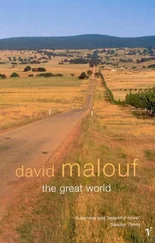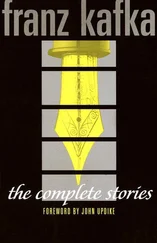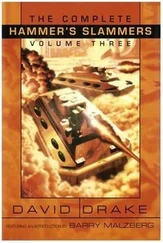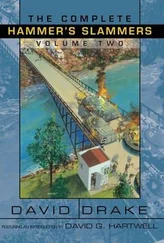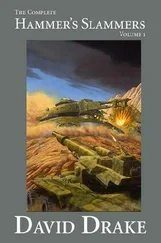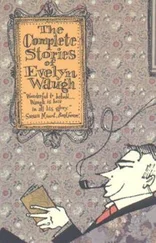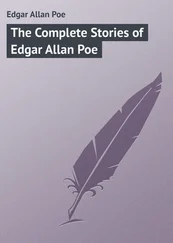The profile, its lovely line: where the base of the skull, so round you could feel it in the cup of your hand, swooped down to the neck, with the vertebrae, all ghostly grey, stacked delicately one above the other, almost pearly, and the Adam's apple a transparent bump. The left profile; then, minimally but perceptibly different, the right.
The Adam's apple: how touchingly present and youthful it was. You felt it in your own throat like a lump of apple, or like a difficult word. And the firm line upwards to the jaw In the third and fourth image the head was turned sharply right — John Winston Green might have been giving the eyes-right salute to an unseen general; but the thorax appeared straight on and all the elements were changed; you saw the contained energy in the throat muscles, the strain of the tendons of the neck. The power and will of a whole being was there. You felt the squareness, the solidity of it all the way down to the footsoles, the stern discipline, held breath in the ribcage, the pushing upwards of the skull, the way gravity tugged, created weight (say eleven stone six) and held it to earth.
The neck seemed thick in the front views. The vertebrae in their pile like children's bricks were too squarely packed. But in profile you caught the delicacy of the thing, and it was this that touched and moved Jude now as it had moved her twenty years ago. The young man's Adam's apple rose in her throat. A word it was, that he had intended to speak but could not, because he had to hold his breath for the machine; a thought that had sparked in the skull, travelled at lightning speed down that luminous cord and got stuck in his throat. It was there, still visible.
John Winston Green, Aunt Connie's young man, had worked as a clerk in the Bank of Queensland. He was an oarsman as well, wrote poetry, and had died at Bullecourt in France, in 1917. The x-rays were Aunt Connie's last memento of him. All the rest, letters with poems in them, snapshots of occasions she still remembered and could describe — picnics at Peel Island, tennis parties, regattas — and all the small gifts he had sent her when he was away on rowing trips in the south, and from Paris and Egypt, had been consumed in a fire nearly thirty years ago. Since they hadn't at first been worth keeping, the x-rays had been stored in a garage and had alone survived. “They were the only thing he gave me that lasted,” Aunt Connie would say in her dry, no-nonsense manner. “Isn't it odd? The most faithful representations of all they were — in the end. Why shouldn't I love them best of all?” This, Jude guessed, is what she must have told her grand-niece Gillian. It is what she had told Jude.
There are natural lines of descent in a family. They are not always the direct ones. It is proper that the objects people care for should find their way down through them, from hand to hand and from heart to heart. “She is my true mother,” Jude Hermiston had told herself once, "and this young man, of whom I have only this brief, illuminating glimpse, is my true father. That lump in his throat must be my name.”
She restored the last of the x-rays to their package. She smiled, and so did the child. And Harriet Vaughan, who was fond of her sister, watched her daughter take the package and clasp it once again, so solemnly, to her breast.
“What was the choice, darling?” she asked, though of course it could not matter.
“Oh, spoons,” the child told her lightly, "that belonged to Grandma. Moya Cope got them. And a little case for jewels.”
Harriet looked again at the ancient envelope the child had hold of and was resigned: not to the entrance of these odd relics among them, but to her daughter, this child who had come to her, she thought, like a stranger, having no likeness she could discover either to Eric or to herself, an utterly dear and separate being whose very difficulty she loved.
“You don't mind, Mummy, do you? I mean — I know the spoons were more valuable”
“Of course I don't,” her mother told her, and leaned down to kiss the child. “You funny bunny! Of course I don't.”
1
There is a point in the northern part of the state, or rather, a line that runs waveringly across it, where the vegetation changes within minutes. A cataclysmic second a million or more years back has pushed two land masses violently together, the one open savannah country with rocky outcrops and forests of blue-grey feathery gums, the other sub-tropical scrub. You arrive at the crest of a ridge and a whole new landscape swings into view. Hoop-pines and bunyas command the skyline. There are palm-trees, banana plantations. Leisurely broad rivers that seem always in flood go rolling seaward between stands of plumed and scented cane. It is as if you had dozed off at the wheel a moment and woken a whole day further on.
Poor white country. Little makeshift settlements, their tin roofs extinguished with paint or still rawly flashing, huddle round a weatherboard spire. Spindly windmills stir the air. There are water tanks in the yards, half-smothered under bougainvillea; sheds painted a rusty blood-colour, all their timbers awry but the old nails strongly holding, slide sideways at an alarming angle; and everywhere, scattered about on burnt-off slopes and in naked paddocks, the parts of Holdens, Chevvies, Vanguards, Pontiacs, and the engines of heavy transports, spring up like bits of industrial sculpture or the remains of highway accidents awaiting a poor man's resurrection. A tin lizzie only recently taken off the road suddenly explodes and takes wing as half a dozen chooks come squarking and flapping from the sprung interior.
Nothing is ever finished here, but nothing is done with either. Everything is in process of being dismantled, reconstructed, recycled, and turned by the spirit of improvisation into something else. A place of transformations.
At one point on the highway, surprisingly balanced above ground and about the same length as the Siamese Royal Barge, is the Big Banana, a representation of that fruit in garish yellow plaster. Two hundred miles further on and you come to the Big Pineapple, also in plaster, and with a gallery under the crown for viewing the surrounding hills. Between the two you are in another country. Men work in shorts in the fields and are of one colour with the earth, a fiery brick-red. Kids go barefoot, moving off the track on to the tufted bank with a studied slowness, as if they had heard somewhere that there is a fortune to be made by getting struck. Little girls in faded frocks hang over gates, dispiritedly waving, or in bare yards sit dangling their legs from an elongated inner-tube that has been hoisted aloft and found new life as a swing.
Every significant happening here belongs to the past and was of a geological nature. A line of extinct volcanoes whose fires were dashed out several millennia back, leaving a heap of dark, cone-shaped clinkers, are the most striking components of the scene. Cooling as they have in odd shapes, they have ceased to be terrible and are merely curious. Even their names in the Aboriginal language, which were often crude but did at least speak up for the mysteries, have dwindled on the local tongue to mere unpronounceables, old body-jokes whose point, if there was one, has been lost in the commonness of use.
It is one of my duties as an emissary of the Arts to bring news of our national culture to this slow back-water. My name is Adrian Trisk, livewire and leprechaun; or more properly, Projects Officer with the Council for the Arts.
The routine is always the same. Advertisements are placed in the “Canefarmers’ Gazette" or “Parish Recorder” and the Shire Hall hired for say Tuesday night at seven thirty, with supper provided and no charge. I show slides of contemporary Australian painting and sometimes a film, using the projector that is housed, along with the paraphernalia for Sunday Mass, in a hutch at the back of the hall; or I lecture on the life and works of an Australian poet. Nothing rigorous. Usually there are no more than a dozen in the audience; sometimes, in bad weather or when my appearance coincides with a meeting of the.
Читать дальше

